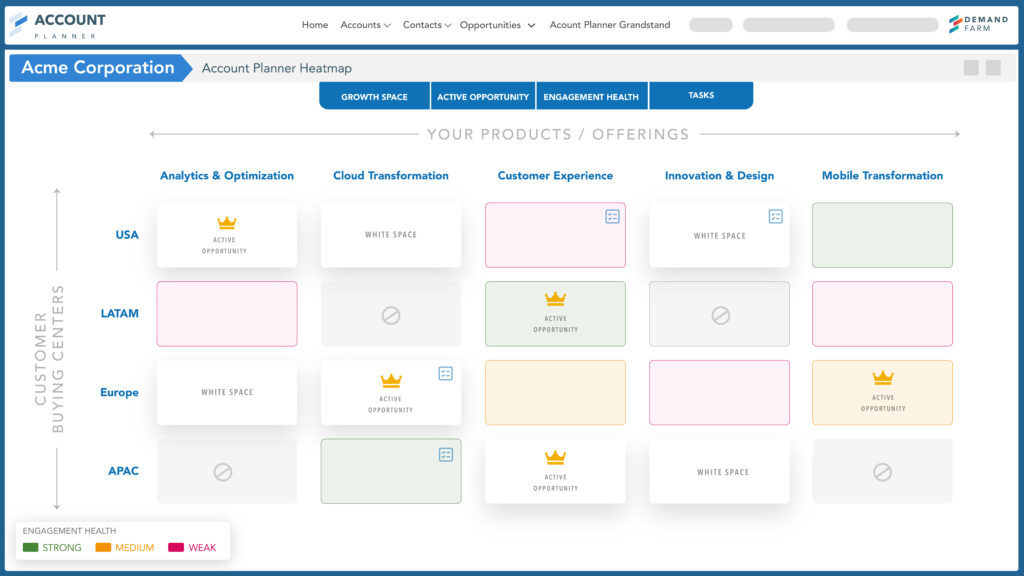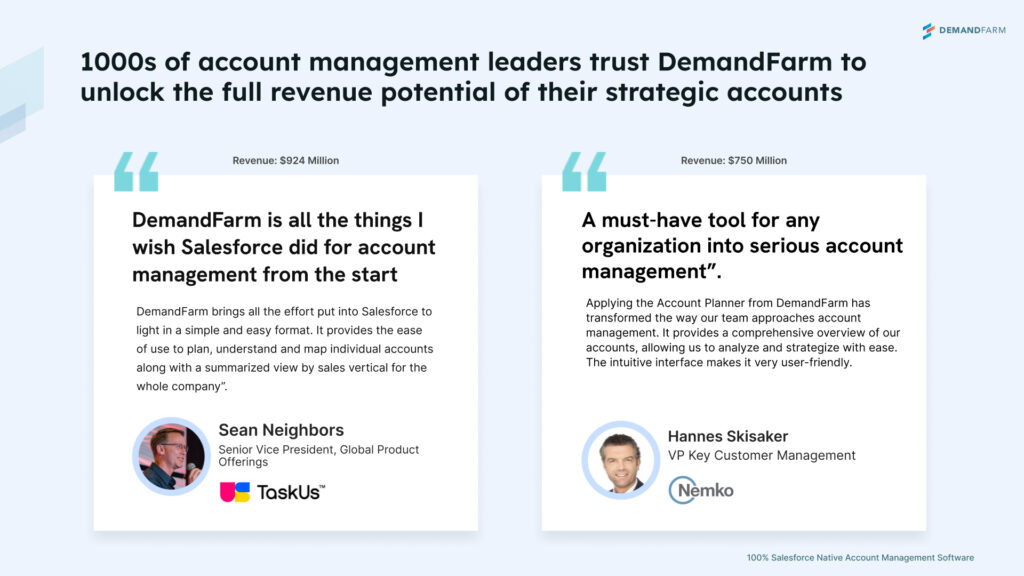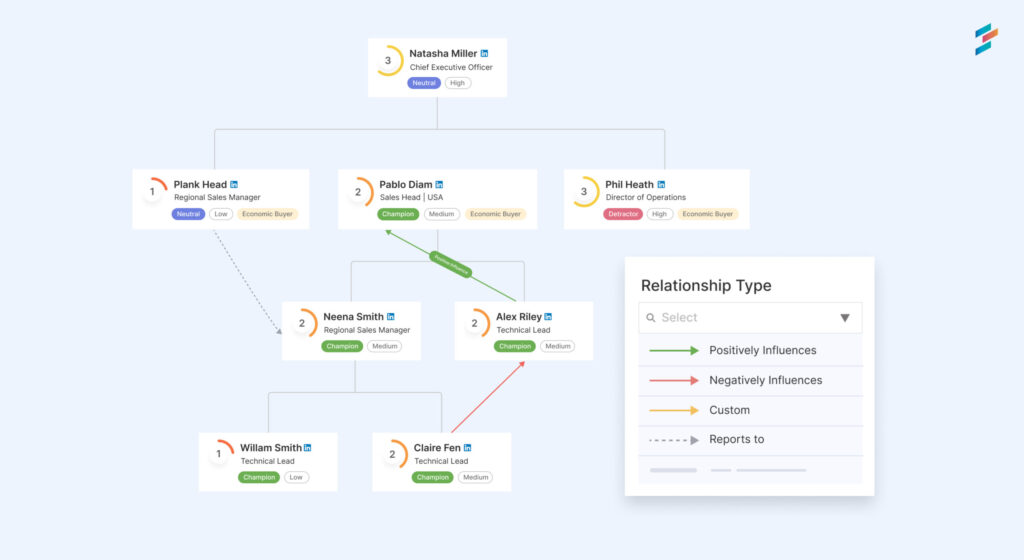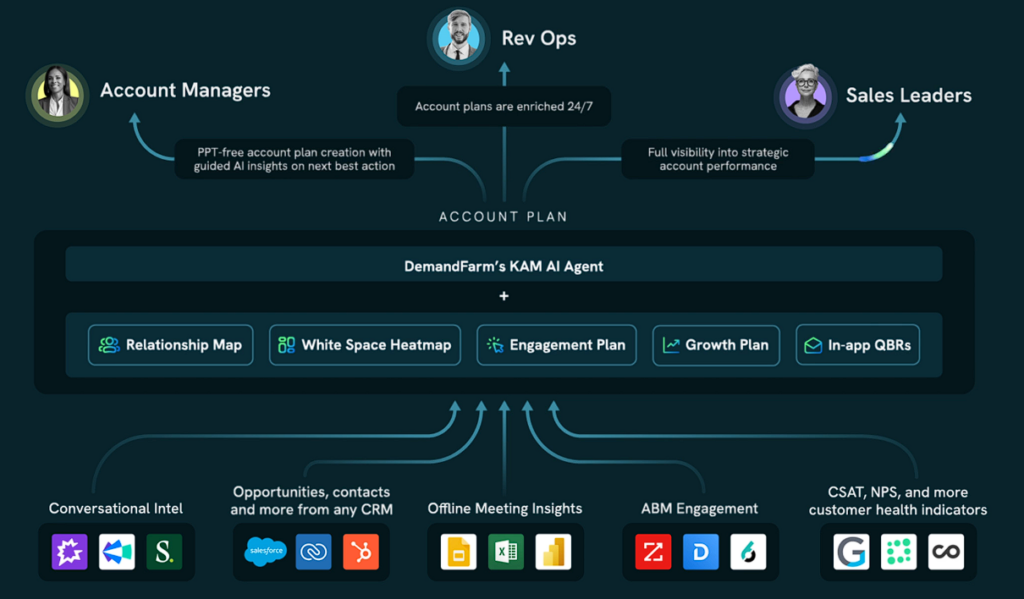What is Strategic Account Planning in Salesforce?
Strategic accounts are the lifeline of every organization which brings substantial profit through repeat business for several years. Strategic account planning is the process of building robust plans to offer proactive management for these strategic accounts to help them in achieving business goals. In this blog, you will also understand the importance of Account Planning within your Salesforce CRM.
56.5% of Organizations don’t take advantage of account planning tools to grow their strategic accounts.
Though Account planning takes much effort and time, organizations can benefit from addressing the level of complexity and competition which is increasingly common in sales today. Above all, a good key account planning strategy will invariably lead to great account plans for all strategic accounts. Hence, Effective key account management must be an ongoing process and not just a one-year event which can reduce the complexity and save time.
Key Benefits of Strategic Account Planning
- Better Win rate (75%)
- Increased understanding of customers’ business (72%)
- Shorter sales cycles (58%)
- Better customer loyalty (55%)
- Increased deal size (49%)
- Better executive access (47%)
- Identify non-competitive deals (27%)
Case Study: Healthcare Industry Company Boosts Strategic Account Revenue by 30%
Account Planning in Salesforce
‘Account Planning is more strategic than tactical’
Over the decades the account planning process has become stale and ineffective. There are two primary reasons
- Firstly, account planning methodologies have become too complex and theoretical. Most importantly, the account planning templates thrust down to the account managers are just a checkbox item filled once before the year and forgotten.
- It’s not that Account Planning is only tactical. Perhaps it’s more strategic now. Moreover, the strategy is in thinking of a better solution for the customer that they haven’t thought about. Earlier the strategy was supplying to the customer’s defined strategy.
So how do we solve this?
You can solve this by enabling Account planning in Salesforce CRM. Salesforce is one of the most popular customer relationship management tools in the world. It helps the sales team to automate their daily tasks and provides them with valuable insights into customers. Sales Account Planning is one of the most important sales tasks that is mostly executed outside of CRM. The complexity increases, because there are a lot of third-party integrations necessary. To optimize this, the sales team must be empowered with key account management software to execute account planning inside the CRM.

What is the Process of Account Planning in Salesforce?
The components of the strategic account planning process could be:

- There is a lot of user-created data that already exist in Salesforce – Contacts, Opportunities …
- Salesforce has plenty of tools to pull intelligence around accounts, contacts from social networks, and the internet.
- Also pull in data from other relevant systems – outlook/google calendar, CPQ, etc. These sources already have built connectors to Salesforce.
- That provides account teams with a deeper understanding of their account – landscape, whitespaces, and financials.
- Configure simpler Salesforce Account Planning templates
Check out DemandFarm’s Key Account Management & Salesforce Native Account Planning Software on Salesforce Appexchange

What does Salesforce Account Planning look like?
- Account teams have visual maps of their accounts in terms of landscape (products versus buying centers), a Salesforce Org chart with a heat map, and financials including existing deals, active opportunities, and forecasts.
- Armed with this data and insights build account plans easily inside Salesforce.
- You can track and review your accounts live with Salesforce account planning.
- Collaborate with all stakeholders across your organization to drive growth.
6 Reasons why you should opt for 100% native Salesforce app for your account planning:
- Simpler to use: 100% Native Salesforce Apps are always simpler to use leading to quick training & onboarding cycle & high adoption rates
- Real-time analysis: All of your data is updated in real-time and is always 100% accurate and 100% up-to-date
- Secure: Native apps comply to all the organizational security settings established within your Salesforce
- Data Protection: No security risk since data never goes outside your Salesforce CRM
- Lightning Fast: 100% native app also means that your reports will run faster and save you time
- Skip Sync Issues: No syncing issues like that can make you lose valuable data or create inconsistencies
While making account plans in Salesforce always ask for account management tools that are 100% native to Salesforce.
Essential Features of Account Planning Software within Salesforce
1. Data Analysis and Tracking
Keeping track of your Sales Account Plan is the key to effective account planning.
- A good Key Account Management software will allow you to create plans with milestones and timelines. It should also help you check your progress against your goals and provide you with timely alerts so that you can make proactive changes.
- A visual pipeline with the different deal stages and with each stage divided into tasks is ideal.
- It’s also important to have industry analysis tools that keep you informed on industry trends and market forces. Similarly, customer relationship analysis is a must-have in any strategic account planning template software as it’s the key to understanding the customer. Customer strategy maps (to assess your customer’s short-term and long-term strategy), stakeholder assessments, and competitor assessments are all essential tracking tools that should be a part of your KAM software.
2. Visualization to Represent Key Analyses
Given the variety and complexity of stakeholders that need to be tracked and analyzed, information overload is a real possibility. Given that the human brain is much more receptive to visual data, your strategic account software should enable the visual representation of complex data. This will help managers make faster strategic decisions. A bird’s eye view of strategic account management helps to identify opportunities and quickly present value-added solutions to the client.

3. Data Consolidation
Without strategic account software, most of your data will likely be all over the place in different formats, from Word docs to PPTs to spreadsheets. It’s important to have consolidated on one platform so that everyone can access data in a consistent format and be on the same page. KAM software gives you a central data repository that makes this possible.
A central repository also allows you to keep a running questions list that contains all the questions related to the account, ranging from billing to technology to engagement. This can help streamline a lot of the work. Managers can stop wasting their time on collating and sorting data and focus on taking strategic decisions.

4. Strategy Development and Action Plan
The right KAM software will have the tools that allow you to build a comprehensive SWOT analysis. This will form the basis for building a comprehensive action plan. A good KAM software helps you identify the risks, assumptions, and dependencies. This enables your managers to play to find the balance between their client’s objectives and the company’s strengths and build an action plan accordingly. The action plan is the sacrosanct list of steps to take your client’s business and your relationship with the client to the next level.
Benefits of Account Planning in Salesforce
- Living-Breathing key account plans that are easier to make and track – that are data-driven too. Account management is no longer an endless template-filling chore.
- A collaborative approach to the key account management model.
- Continuity and retention of tribal knowledge even when account teams change.
- Aggregated data of all key account plans, once provide valuable business insights to leadership.
- Use Einstein analytics/ AI provided by Salesforce to predict and drive account growth.
 On-Demand Webinar: Unfiltered take on AI in Account Planning: Meet DemandFarm’s KAM AI
On-Demand Webinar: Unfiltered take on AI in Account Planning: Meet DemandFarm’s KAM AI 


